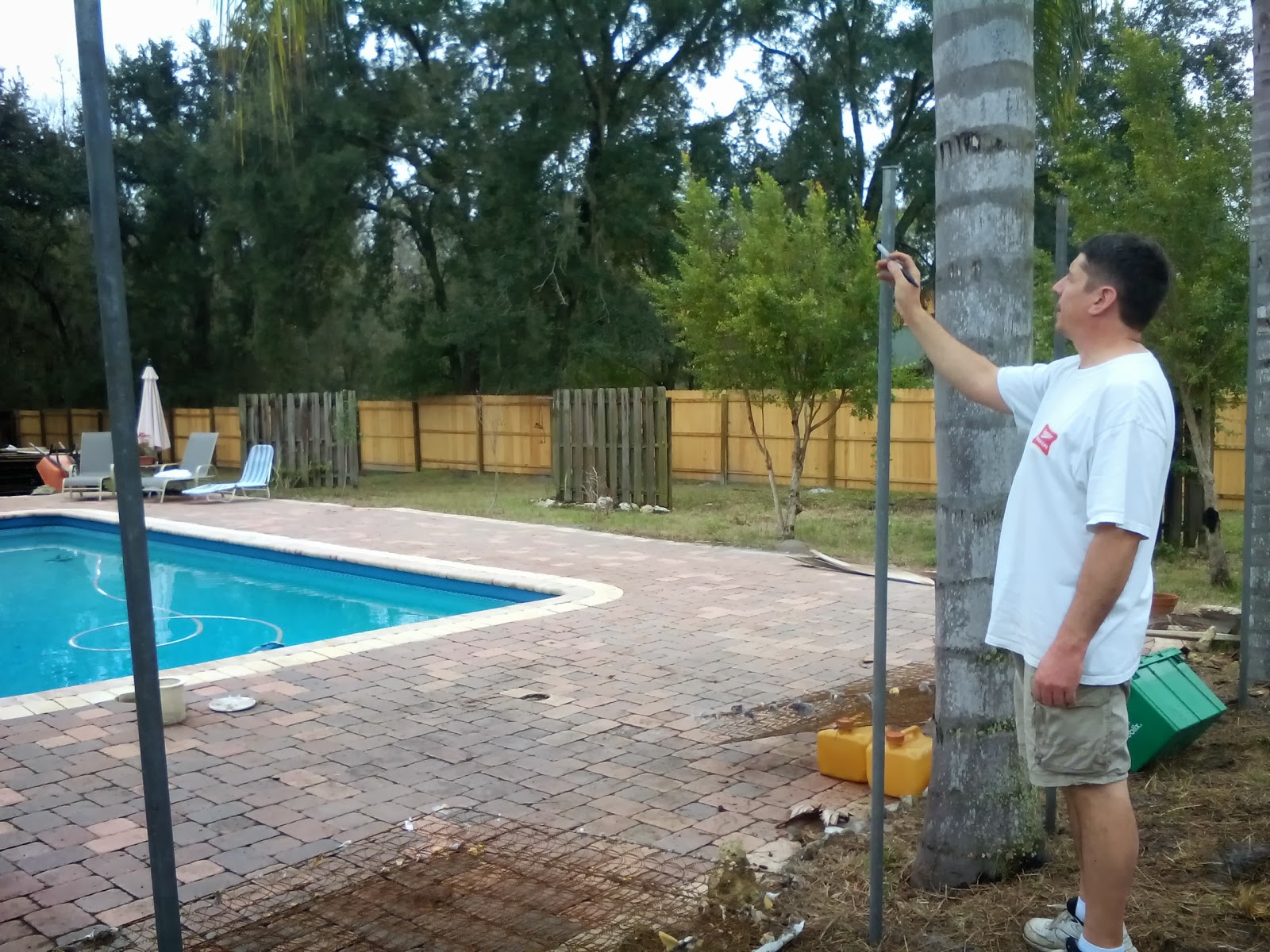I recall a few years ago while Sam and I made a day trip to St. Augustine, we saw something that caught our eye: leaves "sculpted" from concrete. We saw how an artist was able to take these leaves to weave intricate fountains using the leaves. I remember thinking how wonderful it would be to be able to have the talent to create such wonders.
Recently on hometalk.com, I saw a
few posts in which others created these leaves and using them for birdbaths. After reviewing some of these, we quickly realized that we too can be artists! We used some of the tips, but modified a bit too.
We started with a large elephant ear. A triangular mount of sand was built up and covered with a piece of plastic. We laid the leaf face down on the mound and cut the stem off as close to the base of the leaf as possible. The leaf laid right onto the triangular mound easily.
The leaf was covered with a good layer of concrete that was just stiff enough that we could form an edge to stop the concrete from becoming a large blob. We covered it with a sheet of plastic and let it sit for a day. **Tip** knowing what we know now, we probably would have stuck a piece of rebar into the base to form our pedestal around that once the leaf part was done.
The next day, we flipped it up and VOILA!
The leave stuck into the concrete a bit, but we were able to peel it off.
Once the leaf was peeled off, we let it sit for another day to make sure that it was good and dry.
I painted the leaf in different stages with acrylic paint to give it some life and depth. I started off painting the entire thing "Smurf" blue.
Next I used silver to get into the deep part of the veins of the leaf.
A little yellow and lime green all over...
And then olive to mellow it out.
As bright as the leaf looks, it really settled down after a couple of days drying.
Next we worked on the pedestal. Sam had this amazing vision of trying to mimic the natural shape of the elephant ear stalk instead of using a traditional upright column. First we bent a piece of 10 ft rebar in half. Then shaped the rebar with little bends throughout to create the "s" curves. We decided that we would have to form this in place. We cleared out the area where this sits and then stabbed the rebar into the ground about 2-2.5 feet. This is what helped give the base the stability to hold the weight of the leaf on top.
After getting the rebar into the ground, we covered it in chicken wire. **Lesson learned: Don't crush up the chicken wire too much. Once you do, you really will have a rough time getting the concrete into the little spaces.
Cover the whole thing with concrete. Remember - too smooth and it falls off. Too thick and you can't work it. Because the concrete kept falling off, we held the concrete in place, and from the base up, wrapped a fiberglass tape around it to act as a form. After it dried, we cut the tape off. This part is definitely at least a two person messy job.
Once the pedestal dried in place, it was painted the same way that the leaf was and then the leaf was adhered with liquid nails.
I covered the nearby area with drop cloth and used a clear coat sealant over the entire project. This protects the paint job and makes sure that any little areas that did not see paint were sealed to that the bath contains the water.
The last part was to let it dry and give the birds a little water to play in!





































